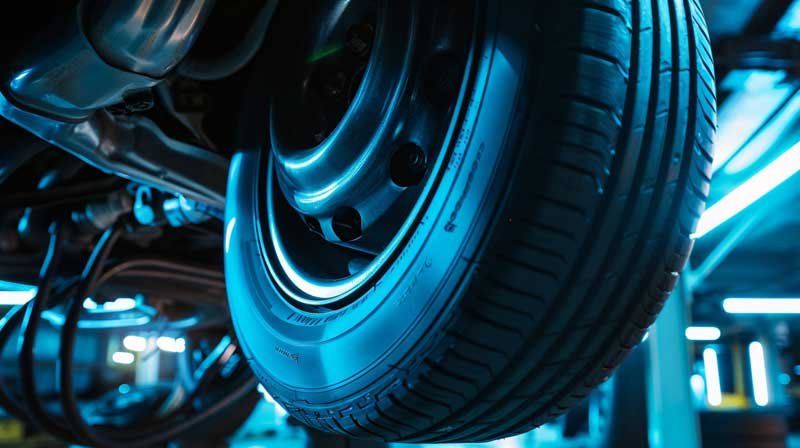Have you ever faced the frustration of using materials that just can’t handle high heat? Imagine running a manufacturing process or using equipment where temperatures climb to extremes, and traditional materials fail. The solution? You need a material that’s heat-resistant, flexible, and durable. That’s where silicone comes in.
Silicone stands out in high-temperature applications because of its unique ability to maintain stability and flexibility in environments where other materials might fail. Whether it’s extreme heat, chemicals, or pressure, silicone performs consistently, making it a top choice for industries requiring heat-resistant solutions.
The key is understanding how silicone’s thermal properties work and why it surpasses other materials in tough, high-temperature environments. Let’s dig deeper to see why silicone is essential for your heat-resistant needs.
What Makes Silicone So Heat Resistant?
One of the primary reasons silicone excels in high-temperature applications is its chemical structure. Silicone, a synthetic polymer made from silicon, oxygen, and other elements, has strong bonds that remain stable under heat.
While many materials weaken or melt at high temperatures, silicone can handle temperatures ranging from -60°C to as high as 300°C (572°F). This resilience allows it to be used in extreme environments, from industrial machinery to automotive engines.
Additionally, silicone doesn’t just resist heat; it also maintains its shape, flexibility, and performance even when repeatedly exposed to high temperatures. So, whether you need silicone in a manufacturing setting or an aerospace application, it performs with consistency and reliability.
Why Do Industries Choose Silicone for Extreme Heat Environments?
Industries that rely on high-temperature processes need materials they can trust. If you’re in manufacturing, transportation, or electronics, chances are you’ve come across silicone in some form. But why do so many industries choose it?
The answer lies in silicone’s impressive heat resistance and durability. Unlike rubber, which may degrade or lose flexibility over time, silicone can endure repeated heat cycles without cracking, hardening, or losing its properties. This makes it a long-lasting solution in places where reliability is key.
From gaskets and seals to cables and tubing, silicone’s ability to withstand thermal extremes ensures that equipment runs smoothly, with fewer failures and less downtime.

How Does Silicone Compare to Other Heat-Resistant Materials?
If you’re wondering how silicone stacks up against other high-temperature materials like rubber, plastic, or metal, here’s a clear breakdown. Each material has its strengths, but silicone’s versatility and performance in extreme heat set it apart.
Let’s take a closer look at how silicone compares to these common materials:
| Material | Maximum Heat Resistance | Flexibility | Durability at High Temperatures | Key Advantages | Limitations |
|---|---|---|---|---|---|
| Silicone | Up to 300°C (572°F) | Excellent | Maintains flexibility and strength | High heat resistance, non-toxic, flexible | Higher cost compared to plastics |
| Rubber | Up to 200°C (392°F) | Good | Degrades at higher temperatures | Affordable, flexible at lower temps | Breaks down at high heat, less durable |
| Plastic | 150-200°C (302-392°F) | Poor | Warps or melts under heat stress | Lightweight, low-cost | Limited heat resistance, brittle |
| Metal | Extremely high (varies by metal) | Rigid | Excellent heat durability, but rigid | Structural strength, heat conductivity | Lacks flexibility, poor insulation |
Key Takeaways:
- Rubber handles moderate heat well but starts to degrade when temperatures exceed 200°C. Silicone, in contrast, remains functional and flexible up to 300°C, making it ideal for applications where higher heat resistance is needed.
- Plastic has a much lower melting point, often warping at 150-200°C. This makes it unsuitable for extreme heat environments, unlike silicone, which can perform reliably without losing its shape or properties.
- Metal is extremely heat-resistant but lacks the flexibility and insulation properties that silicone provides. While metal is strong, it cannot offer the sealing or flexibility benefits crucial in many high-temperature applications.
This comparison highlights why silicone is such a unique material. It’s heat-resistant like metal but offers the flexibility and insulating properties of rubber, giving you the best of both worlds in demanding environments.
Which Applications Rely on Silicone’s Heat Resistance?
Now that we know silicone’s benefits, let’s explore where it’s used. Silicone’s ability to handle heat makes it the go-to material in a wide range of industries:
Automotive and Aerospace
From engine gaskets to wiring insulation, silicone is crucial in automotive and aerospace applications. Engines generate extreme heat, and silicone seals and components help maintain performance and safety. Silicone’s heat-resistant properties also make it ideal for use in aircraft components that need to withstand temperature extremes at high altitudes.

Electronics
In electronics, components are constantly exposed to heat. Silicone is used in cable insulation, thermal pads, and seals to ensure that devices operate efficiently, even in high-heat environments. The last thing you want in sensitive electronics is for materials to melt or degrade under heat.
Industrial Equipment
Factories and manufacturing plants rely on silicone for everything from seals to conveyor belts. Equipment operating in high-heat conditions, like ovens or smelting equipment, benefits from silicone’s ability to maintain its properties under thermal stress. This durability leads to fewer replacements and lower maintenance costs.
Medical Devices
In the medical field, silicone is used in devices like sterilization equipment or implants that must endure high heat. Its non-toxic nature and ability to withstand heat make it invaluable in creating reliable, safe, and effective medical products.
What Other Benefits Does Silicone Offer Besides Heat Resistance?
Heat resistance is a key feature of silicone, but it’s not the only one. Silicone’s versatility makes it a top choice for various reasons beyond its ability to handle extreme temperatures:
- Flexibility: Silicone remains flexible even at high temperatures, unlike other materials that may become brittle. This is critical in applications requiring movement or where tight seals are needed.
- Chemical Resistance: Silicone resists oils, chemicals, and other substances, which is a major advantage in industrial environments where exposure to harsh materials is common.
- Non-Toxic and Food-Grade: Many silicone products are non-toxic and can be food-grade, meaning they’re safe to use in food preparation or medical applications. High heat resistance is crucial in cooking tools or sterilization processes.
- Longevity: Because silicone doesn’t degrade easily, it offers a longer lifespan than many alternative materials, reducing the need for frequent replacements.
How Can You Take Advantage of Silicone’s Properties for Your Business?
If your business involves high-temperature applications, incorporating silicone could reduce maintenance costs, improve efficiency, and extend the lifespan of your equipment or products.
For industries like automotive, manufacturing, or electronics, choosing the right materials makes a significant difference. Using silicone seals, gaskets, or insulation components ensures that equipment runs smoothly without frequent breakdowns or part replacements.
Silicone’s versatility also means you can design custom solutions for your specific needs. Whether you require a particular shape, size, or flexibility, silicone can be molded to meet the most demanding specifications.

Is Customization Possible with High-Temperature Silicone Products?
Yes, customization is a major benefit of silicone. At Ruiyang Silicone, we specialize in creating custom silicone products tailored to high-temperature environments.
Whether your business needs gaskets, seals, tubing, or molds, silicone can be shaped, sized, and designed to fit specific requirements. With cutting-edge technology and flexible manufacturing processes, it’s possible to create solutions that precisely meet your operational demands.
If you’re looking for heat-resistant materials that offer both high performance and customization options, silicone is an ideal choice.
Conclusion
Silicone is the perfect solution for high-temperature applications, offering unmatched heat resistance, flexibility, and durability. From automotive and aerospace industries to electronics and medical devices, silicone’s ability to withstand extreme heat ensures that your products and equipment continue to perform under pressure.
Looking for customized silicone solutions? Let Ruiyang Silicone help you create the perfect high-temperature product to meet your needs. With our expertise, you’ll get a reliable, cost-effective solution every time.